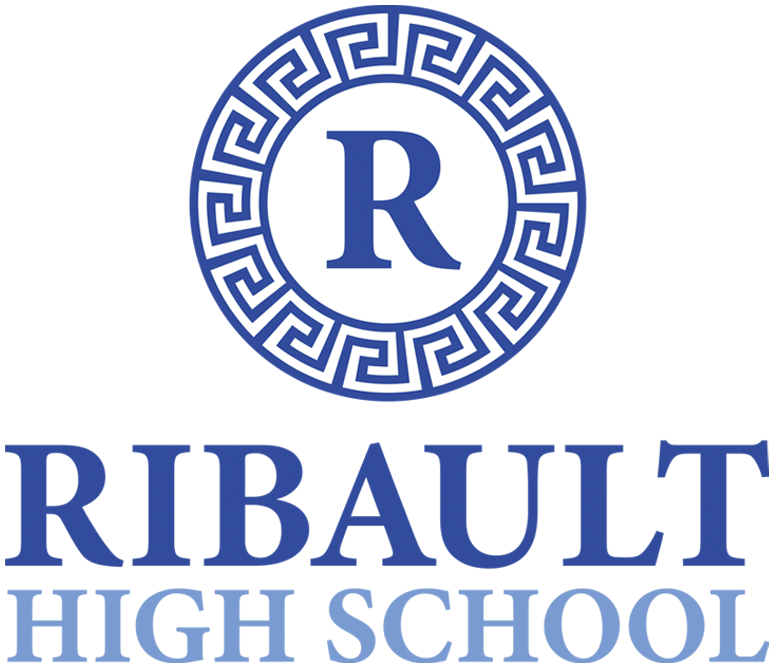

Duval County Public Schools (DCPS) have worked collaboratively to create Jean Ribault High School’s Digital Audio Program.
Program Sequence
9th grade: Digital Audio Production 1
01.0 Demonstrate knowledge of school and classroom procedures. The student will be able to:
01.01 Verbalize the rules and operational procedures of the school and classroom.
01.02 State the nature of instruction.
01.03 Identify what will be learned in relation to stated goals and existing job opportunities.
02.0 Demonstrate the ability to operate an audio console. The student will be able to:
02.01 Demonstrate an ability to control the audio console during the recording of a show or program; combine all the sound elements onto tape, compact disc or for broadcast.
02.02 Route outside organizations through the audio console or computer.
02.03 Demonstrate application of an appropriate recording mix while adjusting audio levels.
02.04 Demonstrate the ability to keep the program on time according to the production plan.
02.05 Perform to high standards in the role of audio console operator in varied format situations.
02.06 Demonstrate knowledge of the audio console signal flow.
03.0 Demonstrate knowledge of production writing. The student will be able to:
03.01 Explain the job of a copywriter and outline the elements of good copy and copy writing.
03.02 Demonstrate the ability to write commercial copy in its various forms.
03.03 Demonstrate the ability to write a production plan for a show.
03.04 Demonstrate the ability to write lyrics for a song or jingle.
03.05 Demonstrate the ability to write show intros, outros and bumpers.
04.0 Demonstrate news-writing skills. The student will be able to:
04.01 Differentiate between news, commentary, and editorials.
04.02 Demonstrate the ability to mark, edit, and present news in an acceptable manner.
04.03 Explain the various sources of news and how they are used.
04.04 List the elements that constitute news materials and evaluate them.
04.05 Demonstrate the ability to write news stories in broadcast style.
05.0 Demonstrate appropriate voice-over skills. The student will be able to:
05.01 Demonstrate the ability to read aloud in a professional broadcast manner.
05.02 Modify reading speed as required to properly complete the assignment in the allotted time.
05.03 Demonstrate the ability to receive and properly act upon direction given by the commercial producer.
05.04 Understand the concept of voice acting and playing a role while speaking.
05.05 Perform various assignments in a professional manner according to industry standards.
06.0 Demonstrate appropriate on-air skills. The student will be able to:
06.01 State the characteristics of various microphones and demonstrate the ability to use them.
06.02 Handle outside organizations through the console.
06.03 Demonstrate how to handle changes in show format during a recording or live broadcast.
06.04 Perform various assignments in a professional manner according to industry standards.
06.05 List the elements and procedures of log keeping.
07.0 Demonstrate the appropriate broadcast speaking manner. The student will be able to:
07.01 Identify and correct verbal deficiencies in self and others.
07.02 Demonstrate the ability to breathe properly, control voice projection, volume, and resonance, and vary tone, pitch and pacing.
07.03 Articulate and pronounce words according to accepted standards.
07.04 Read aloud in a professional broadcast manner.
07.05 Outline the qualifications and requirements of an announcer.
07.06 Demonstrate development of the skills related to announcing, the various techniques of delivery and procedures according to accepted standards.
10th grade: Digital Audio Production 2
08.0 Demonstrate the set up and configuration of a computer for audio applications. The student will be able to:
08.01 Install basic peripheral devices related to audio programs.
08.02 Install and configure software related to audio programs.
08.03 Demonstrate basic knowledge of computer system requirements.
08.04 Demonstrate basic knowledge of installing plug-ins or additional audio source material such as beats and/or samples.
08.05 Understand the signal flow of a digital audio workstation.
09.0 Understand the operation of basic reproduction, reinforcement and recording audio equipment. The student will be able to:
09.01 Assess the audio technology needs of a music production (pre-production).
09.02 Evaluate available audio resources.
09.03 Select and configure appropriate hardware and software.
10.0 Demonstrate understanding of the requirements for set up and operation of a sound reinforcement system. The student will be able to:
10.01 Demonstrate basic understanding of audio electronics (e.g., head room, biasing, distortion, equalization, frequency response).
10.02 Demonstrate basic understanding of acoustics.
10.03 Demonstrate knowledge of the principles of operation of analog/digital devices (block diagram).
10.04 Demonstrate basic understanding of audio signal flow in an analog or digital chain.
10.05 Formulate strategies for audio reinforcement of music productions.
10.06 Evaluate performance needs.
10.07 Evaluate technical needs as appropriate to given spaces.
10.08 Configure a sound reinforcement system to meet performance needs.
10.09 Analyze various audio qualities to achieve the proper sound mix.
10.10 Perform transactions with audio suppliers.
10.11 Design a plot for proper microphone and speaker selection and placement.
10.12 Evaluate the quality of a multi-track recording.
10.13 Interpret audio needs for the end user.
10.14 Supervise equipment operators.
10.15 Evaluate the quality of the final mix to industry standards.
11th grade: Digital Audio Production 3
11.0 Demonstrate the application of control protocols and their relationship to equipment used in the music industry. The student will be able to:
11.01 Demonstrate an understanding of MIDI.
11.02 Utilize a computer and multiple MIDI instruments.
11.03 Record a single-sound track, add multiple-sound tracks, and change MIDI voices using the appropriate software.
12.0 Demonstrate basic operation of a digital audio workstation. The student will be able to:
12.01 Demonstrate knowledge of the digital audio workstation interface.
12.02 Create and arrange a multi-track project.
12.03 Create interest and effect using editing techniques.
12.04 Design and edit audio using a waveform editor.
12.05 Record audio directly to the digital audio workstation.
12.06 Demonstrate knowledge of mixing audio.
12.07 Demonstrate skill in using audio effects and plug-ins.
12.08 Prepare an audio project for finishing and final mix down.
12.09 Transfer audio files between various audio software applications.
12.10 Record finished audio to tape or compact disc and/or publish to a webpage.
13.0 Demonstrate basic digital production skills. The student will be able to:
13.01 Demonstrate understanding of digital audio storage concepts and digital storage media.
13.02 Demonstrate knowledge of and the ability to operate digital recording decks and other digital storage devices.
13.03 Demonstrate a working familiarity with and understanding of the function and operation of digital audio workstations.
13.04 Demonstrate the ability to edit, cut, erase, and insert sound utilizing various digital production techniques.
12th grade: Digital Audio Production 4
09.0 Understand the operation of basic reproduction, reinforcement and recording audio equipment. The student will be able to:
09.04 Formulate strategies for producing multi-track recordings.
09.05 Evaluate production needs for microphone applications.
09.06 Demonstrate proficiency with multi-track, multi-channel mixing consoles.
09.07 Formulate strategies for digital editing.
09.08 Configure audio recording systems for optimal and appropriate use of signal processing equipment.
09.09 Engineer a recording session and prepare appropriate documentation.
09.10 Mix multi-track recordings.
09.11 Configure audio equipment for optimal musical mix.
09.12 Create a mixing plan.
09.13 Evaluate the quality of multi-track recordings.
09.14 Interpret audio needs for the end user.
09.15 Supervise equipment operators.
09.16 Evaluate the quality of the final mix according to industry standards.
Course Purpose
The purpose of this program is to prepare students for initial employment as radio and television announcers, audio and video equipment technicians, sound engineering technicians, and broadcast technicians.
This program offers a sequence of courses that provides coherent and rigorous content aligned with challenging academic standards and relevant technical knowledge and skills needed to prepare for further education and careers in the Arts, A/V Technology and Communication career cluster; provides technical skill proficiency, and includes competency-based applied learning that contributes to the academic knowledge, higher-order reasoning and problem-solving skills, work attitudes, general employability skills, technical skills, and occupation-specific skills, and knowledge of all aspects of the Arts, A/V Technology and Communication career cluster.
The content includes, but is not limited to, communication skills, leadership skills, human relations and employability skills; safe and efficient work practices; announcing and moderating programs; preparing copy, programming, and operating audio broadcast equipment to support the production of materials or programs.
